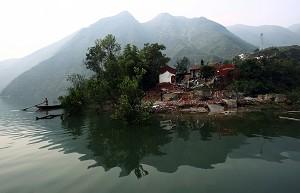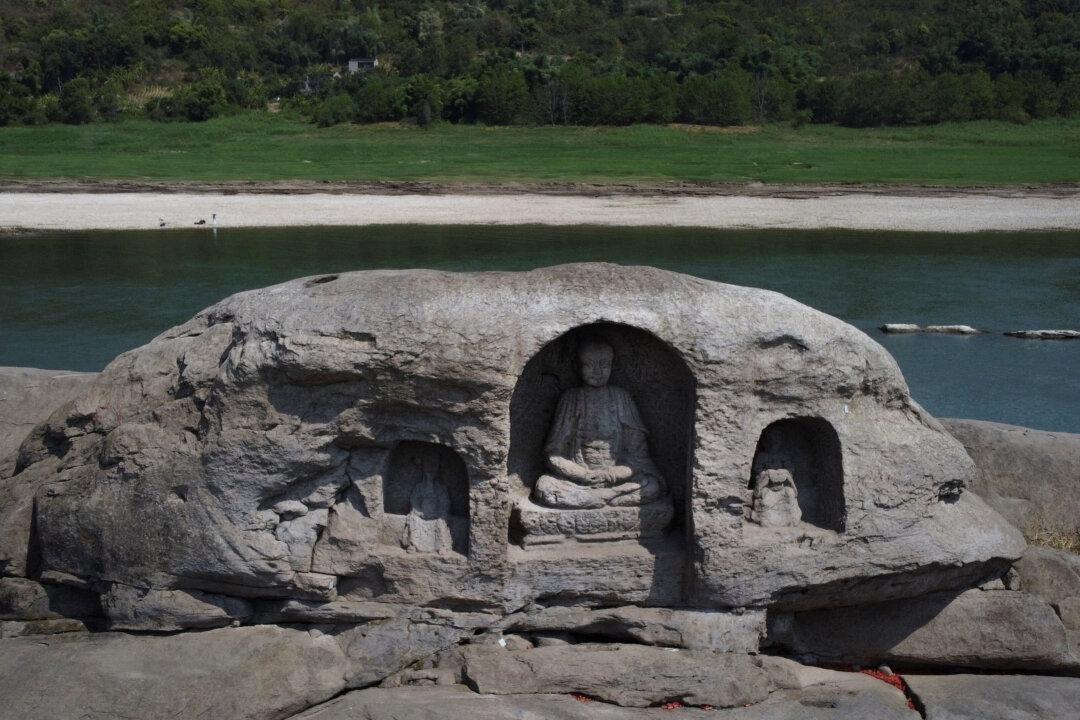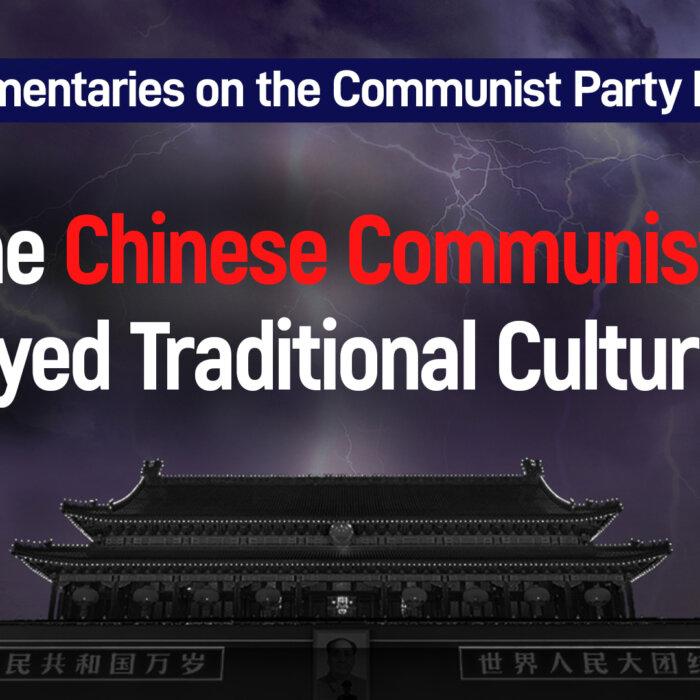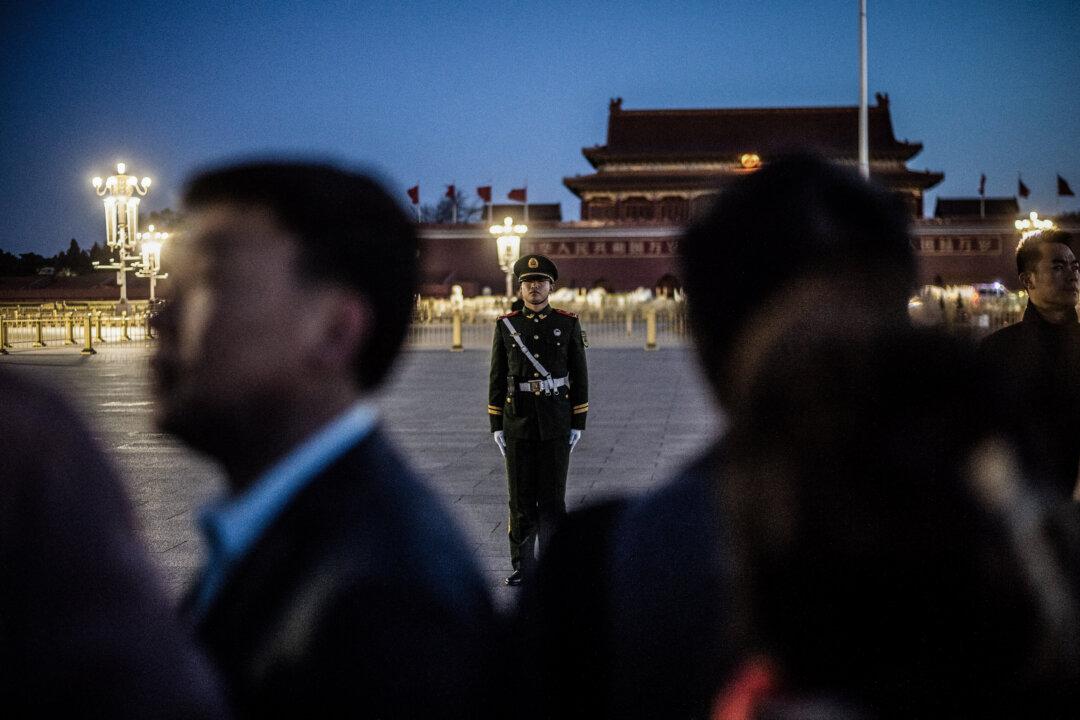Groups of ancient Buddha statues have re-emerged in Chinese reservoirs in recent months.
These artifacts were first submerged when the Chinese communist regime started to build reservoirs and dams in the 1950s. Experts say this is another way that the ruling Chinese Communist Party (CCP) has systematically erased traditional Chinese culture.
According to Chinese media reports earlier in July, a group of Song dynasty (960–1279) cliff carvings of Buddhas have emerged on the cliffs along the Yutan Reservoir in Dazu district in Chongqing, in the upper stream of the Yangtze River, considered a cradle of Chinese civilization.
Deng Qibing, research curator at the Dazu Rock Carvings Research Institute, said that since the beginning of spring, there has been less rainfall in Dazu district than normal. This has caused the water level in the Yutan Reservoir to drop, revealing the statues. Yutan Reservoir was built in 1959 and was expanded in June 2007.
This followed the re-emergence of two other groups of ancient Buddha statues in previous months along China’s Yangtze and Yellow rivers.
In June, also because of a drop in water levels, more than 20 carved Buddha statues that were once part of Foji Temple emerged. The temple was submerged with the creation of Shufangba Reservoir in Anyue, Sichuan Province, in 1974. The heads of the Buddha statues used to emerge almost every year in the dry season, but since the 2020s, the statues have fully emerged for a few months on multiple occasions.
Flooding Historical Sites Is CCP’s Common Practice

Since the era of Mao, the communist dictator who ruled China until his death in 1976, the CCP has carried out large-scale water conservancy projects and built many reservoirs, in accord with Mao’s slogan: “Battling with heaven is endless joy, fighting with the earth is endless joy, and struggling with humanity is endless joy.” At the time, cultural preservation was contrary to the policies of the revolutionary state.
Many of these reservoirs were built near China’s famous historical sites and sacred religious places, such as the Wudang Mountains, said Wang He, a U.S.-based China affairs observer.
“Many historical sites and ancient statues, including the Buddha statues in Anyue, Sichuan, which were very famous, were submerged in water in the reservoirs,“ Wang He told The Epoch Times on July 9. ”This is a very common phenomenon across the country.”
He also noted that many of China’s water conservancy projects did not play any significant role in generating hydroelectricity and had many negative environmental impacts. Not much thought was given to the ancient Buddha statues and historical sites that “just disappeared ... and were buried in the water.”
Wang Weiluo, a renowned Chinese hydrologist based in Germany, concurred that submerging artifacts and historical sites in the construction of reservoirs, with no efforts to preserve or record their state, is a common practice in communist China.
As for how many cultural relics and historical sites were submerged, “there are no data,” he told The Epoch Times on July 9.
He cited the construction of the Xin'anjiang Reservoir, also known as Qiandao Lake, as an example. Its construction started in 1957 and was completed in 1960.
“They submerged the entire county town, and many ancient buildings in it are now underwater,” Wang Weiluo said.
Wang Weiluo used the CCP’s controversial Three Gorges Dam project as an example. During its construction from 1994 to 2012, the dam flooded many highly valuable historical sites, in addition to causing global environmental concerns.

Numerous ancient temples, villages, and towns, along with countless artifacts, were submerged and have disappeared forever, as the Three Gorges Dam project not only built a massive reservoir, but also changed the course of some parts of the Yangtze River.
“When the Three Gorges project was launched, there was a period of time to rescue cultural relics,“ Wang Weiluo said. ”There were too many cultural relics and historical sites there, and it would take a long time to save them. The CCP did not have the patience for it, so most of the cultural relics and historical sites were submerged underwater without being relocated or excavated.”
The CCP’s current approach is “even more brutal,” according to Wang Weiluo.
No Attempts at Preservation
The CCP’s treatment of cultural relics in the construction of a reservoir is very different from normal countries’ preservation approach, which typically includes relocating the cultural sites and relics, setting up special reservation zones, or rearranging the location of the modern construction projects to avoid losses to the invaluable historical sites.
Wang Weiluo compared the CCP’s practice with the construction of the Aswan Dam in Egypt in the 1960s.
When the Abu Simbel temples were about to be submerged during the building of the Aswan Dam, “Egypt said that it had no money to relocate the temple,” Wang Weiluo said.

Wang He said submerging historical sites and artifacts in hydraulic engineering projects is another type of “cultural revolution” that the CCP has carried out, denying Chinese people the ability to access and know their precious historical relics and sites.
“This is a huge loss, sabotaging the continuation of traditional Chinese culture,“ he said. ”It is actually impossible to count. It is just that nowadays it appears in the news from time to time that some places have dried up or the water level has dropped, and some sculptures and historical sites have re-emerged. Only then we get to know a little how brilliant and glorious the ancient Chinese culture was.”






